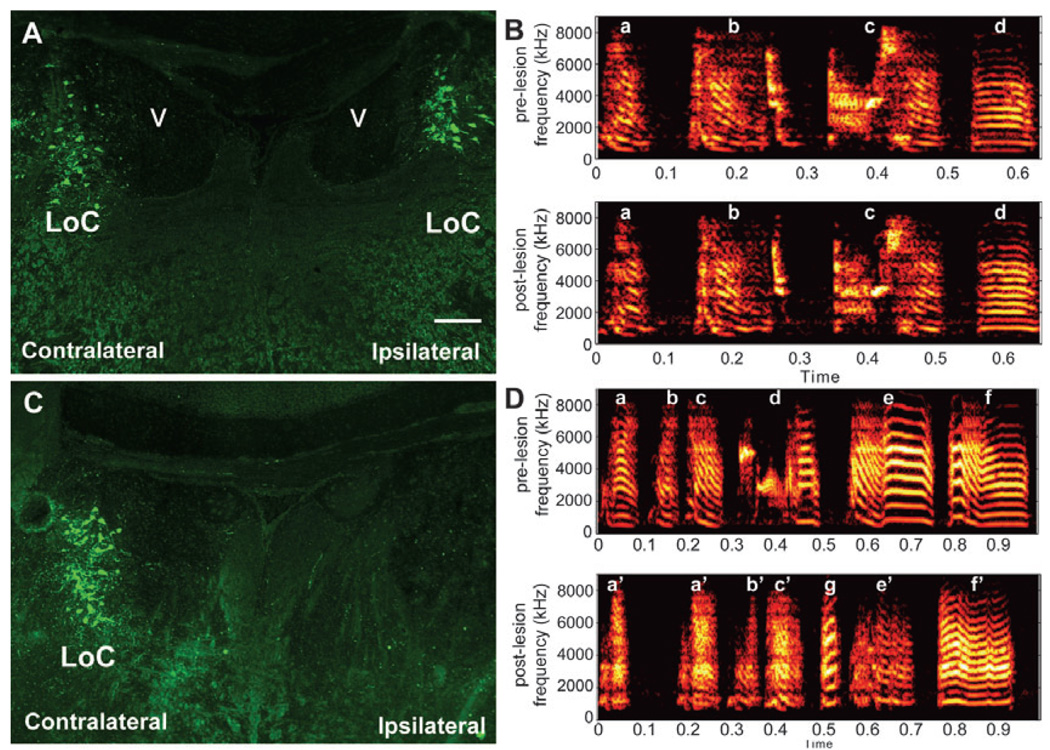FIG. 3.
Differential effects of VTA–SNc lesions alone and combined VTA–SNc and LoC lesions on singing behaviour. Song motifs of two birds before (pre) and after (post) lesions are available as Supplementary Audio S1–Supplementary Audio S4 (.wav files). (A) Unilateral VTA–SNc-lesioned animal with LoC intact bilaterally (DBH-stained neurons, green). Frontal section. (B) Song motif structure and syntax of the bird in (A) did not show major changes; pre- and post-lesion song motif sequence and syllable structure (a–d) were similar. (C) Unilateral VTA–SNc-lesioned animal with a unilateral LoC lesion (DBH-stained neurons, green). Frontal section. (D) Song structure and syntax of the bird in (C) showed major changes; song syllable structure was degraded (syllables a′, c′, e′ and f′) and motif sequence had deletions (syllable b) and additions (syllable g; Supplementary audio S4). Scale bar, 0.25 mm.

